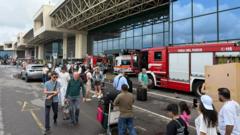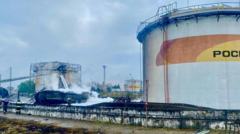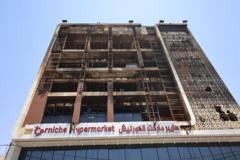An investigation has revealed that the fire at Heathrow Airport's electrical substation was due to a long-ignored maintenance issue.
Heathrow Airport's Closure Linked to Years of Neglected Maintenance: Investigation Reveals

Heathrow Airport's Closure Linked to Years of Neglected Maintenance: Investigation Reveals
Report uncovers the reasons behind Heathrow's prolonged shutdown due to fire at an electrical substation.
The fire at an electrical substation that resulted in a more than 12-hour shutdown of London's Heathrow Airport in March was attributed to a short circuit in an inadequately maintained transformer, according to a report released by British government regulators. The incident led to the disruption of over 1,000 flights, as essential safety systems lost power, forcing a halt to all flights for most of the day. Previously, officials had confirmed that the fire, which caused the outage, was not related to terrorism or any malicious act.
The 77-page investigation revealed that maintenance problems with a bushing component of the transformer, known as SGT3, were identified back in 2018 but remained unresolved. Despite multiple attempts to schedule necessary maintenance, the work was never carried out, including a deferral of maintenance in 2022. The last recorded maintenance on SGT3 took place in July 2018, by the operating company, National Grid Electricity Transmission.
The report highlights that the unexpected electrical failure raised concerns among travelers, airline representatives, and British political leaders regarding the stability of the country's electrical infrastructure. Prime Minister Keir Starmer expressed his deep concern regarding the airport's closure, asserting that important questions lingered about the incident.
Furthermore, the inquiry noted that Heathrow's internal power systems were not equipped to rapidly switch over to other unaffected substations, as officials had not anticipated dealing with such a catastrophic power outage. The report emphasized that the airport company had a misguided perception of the reliability of the electrical supply network and failed to design their internal distribution system in a way that would allow for swift recovery from power losses, depending instead on manual interventions.




















